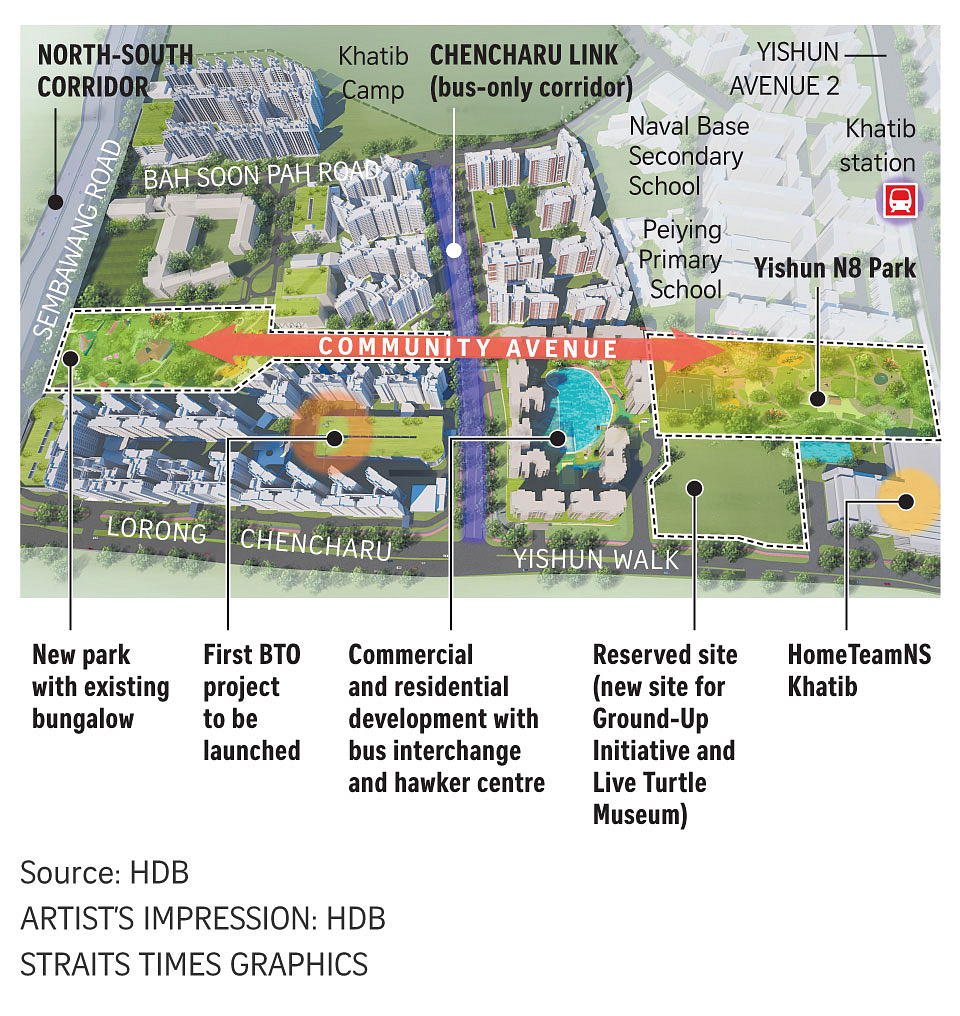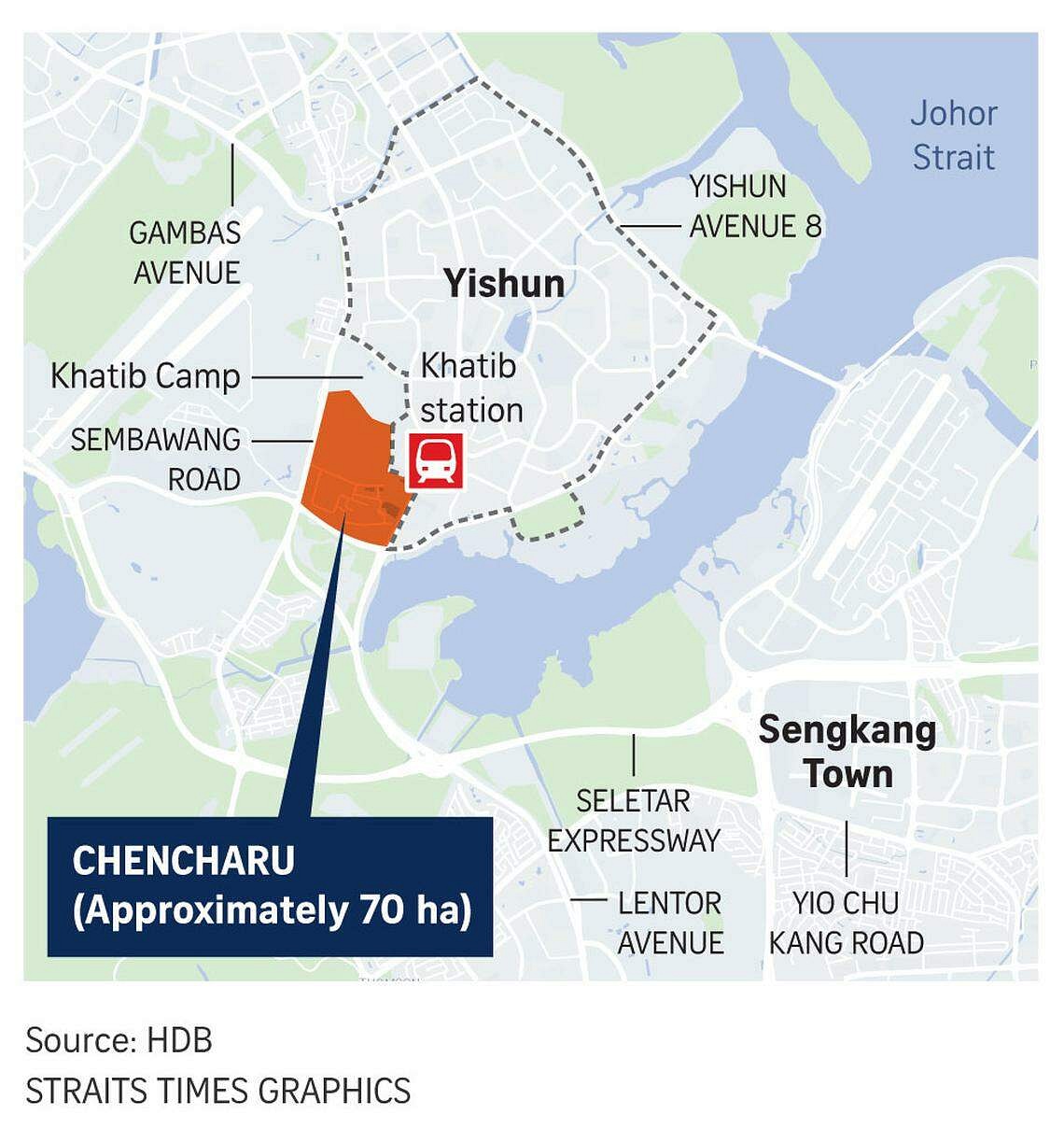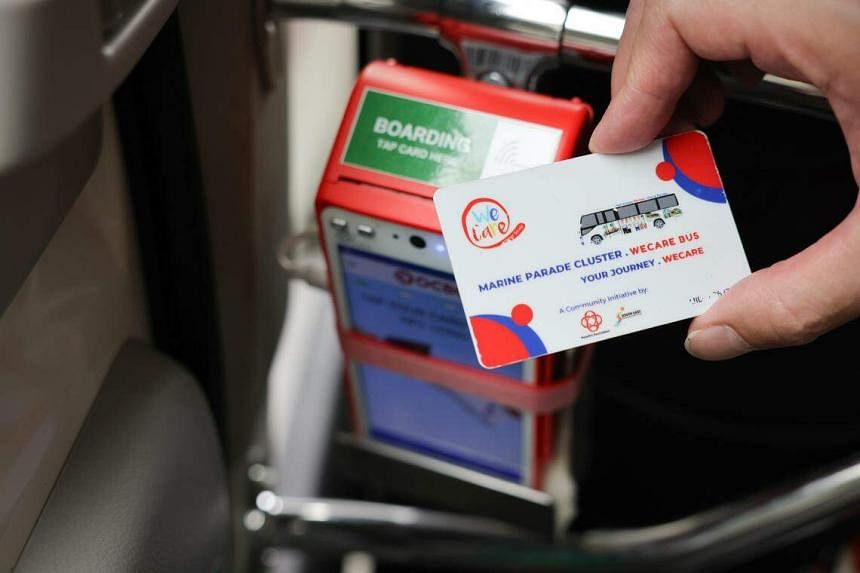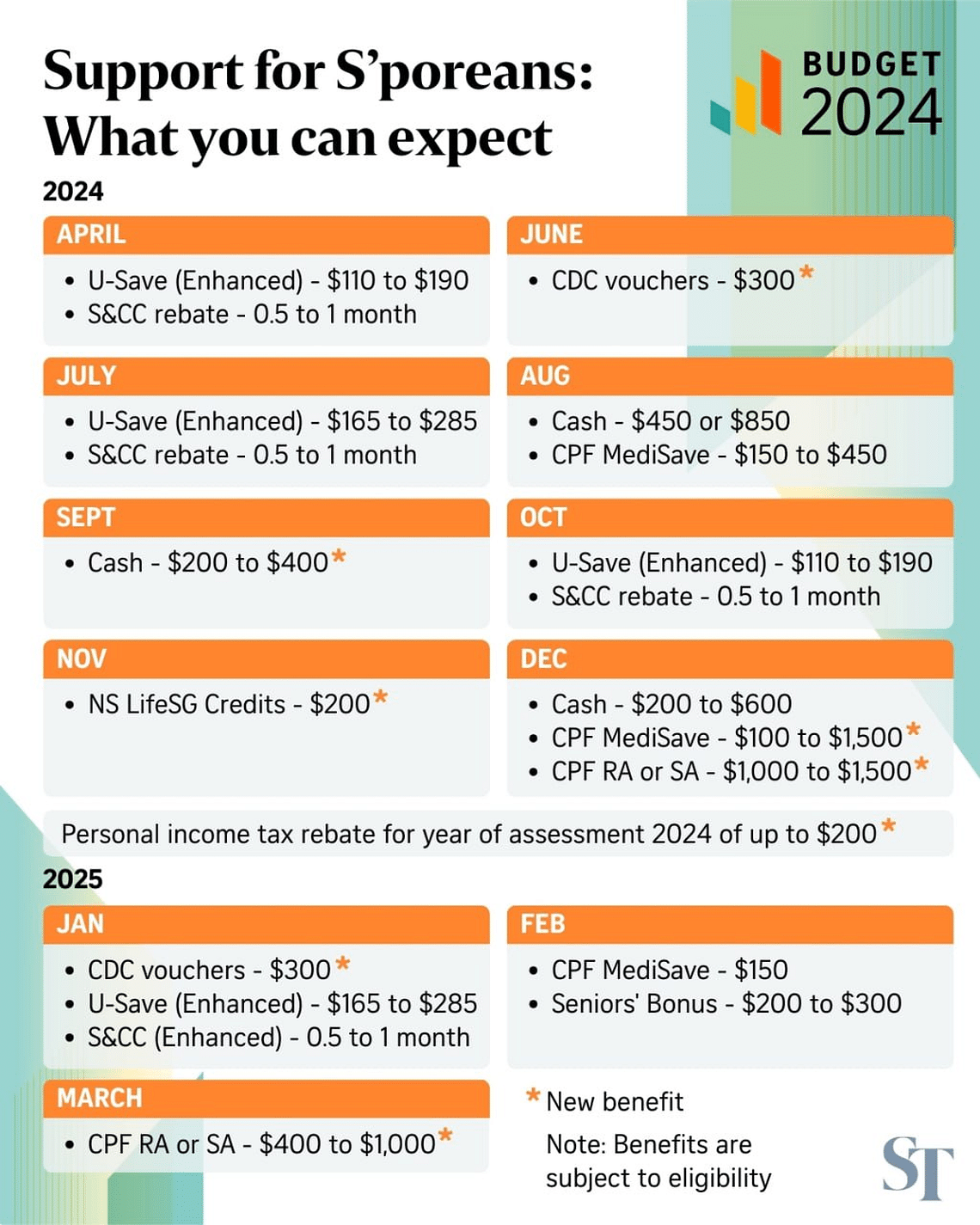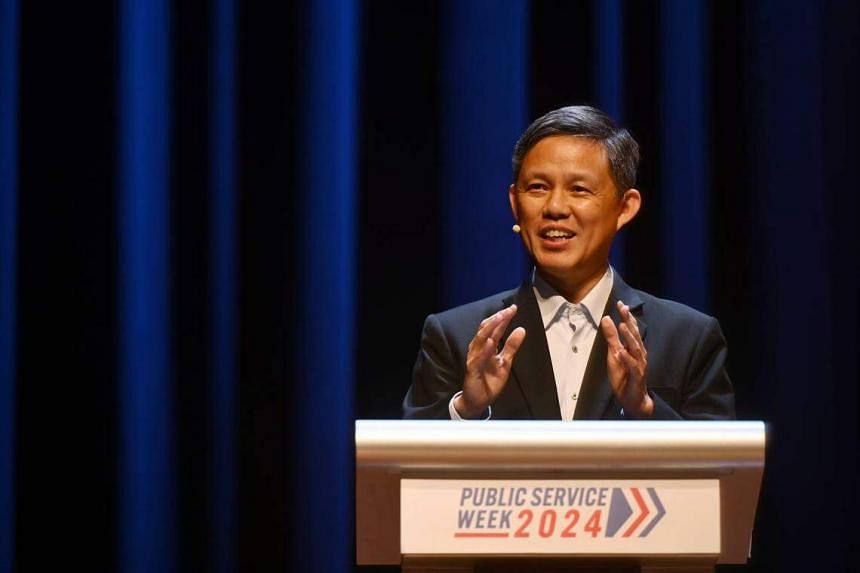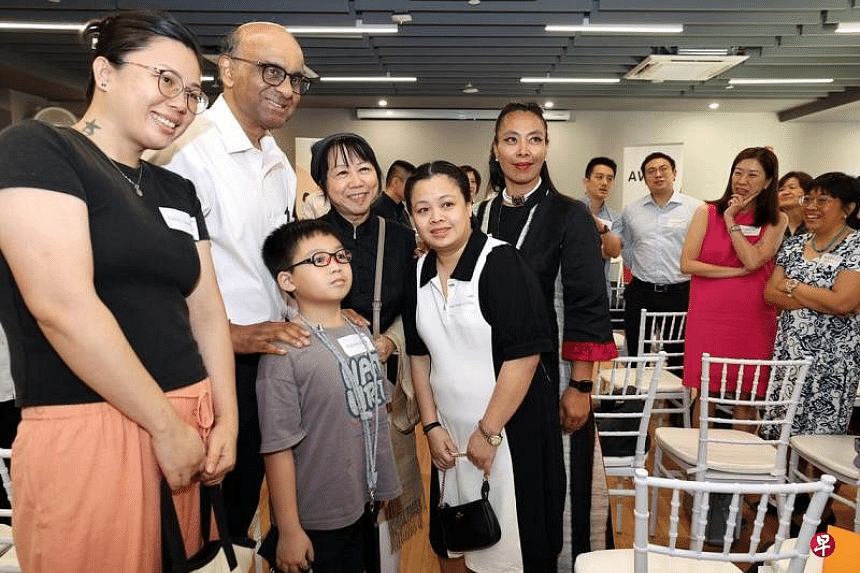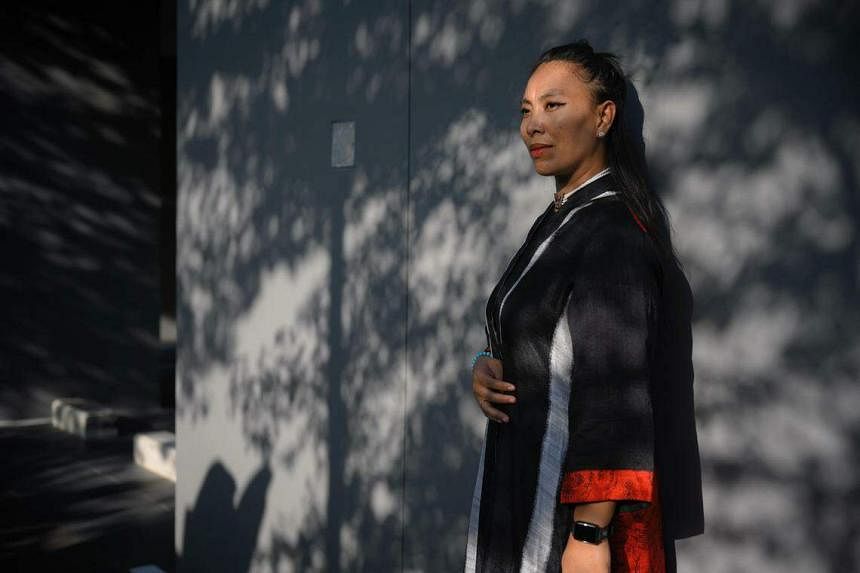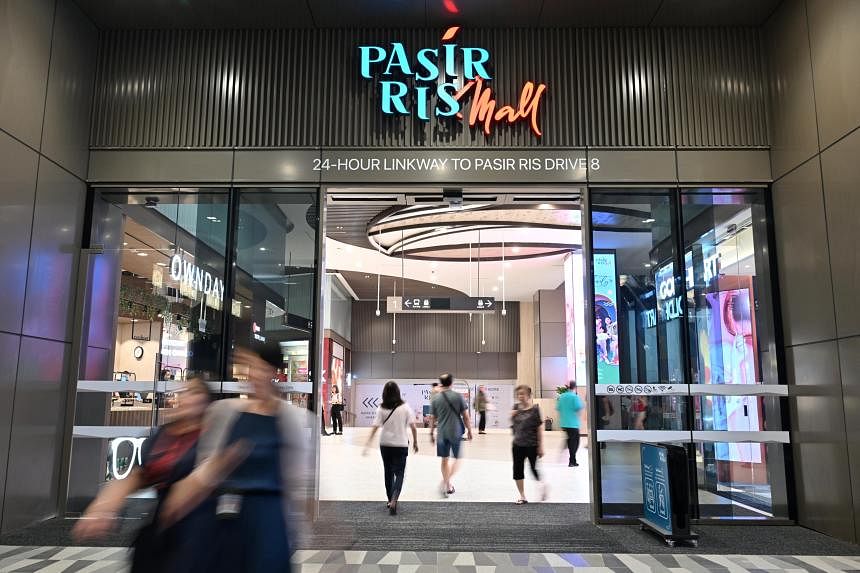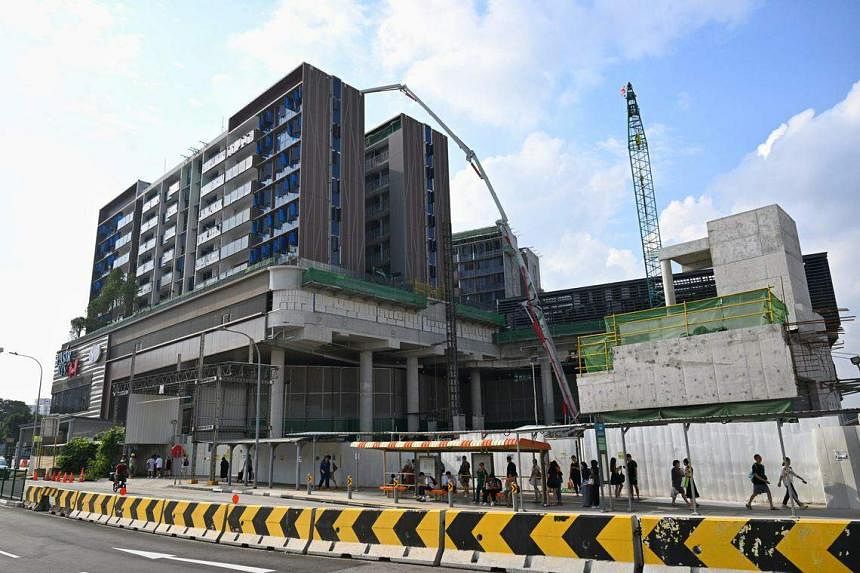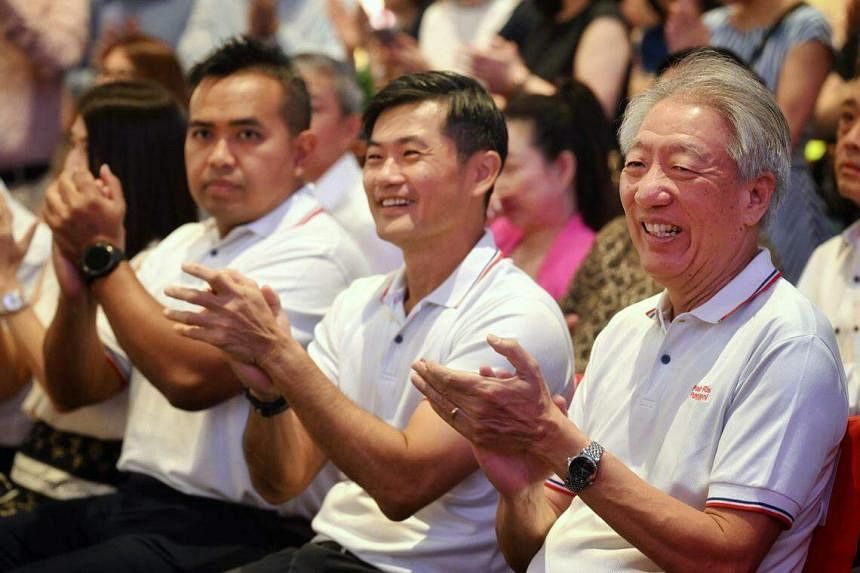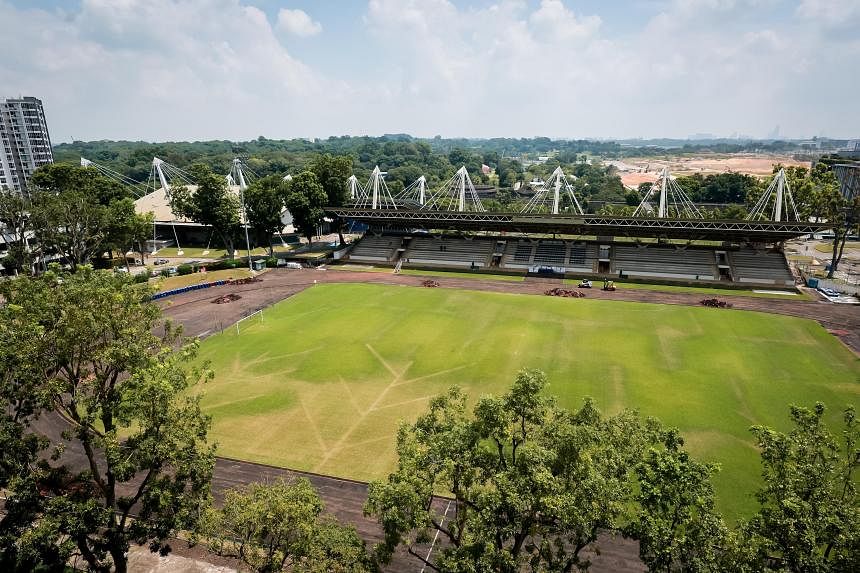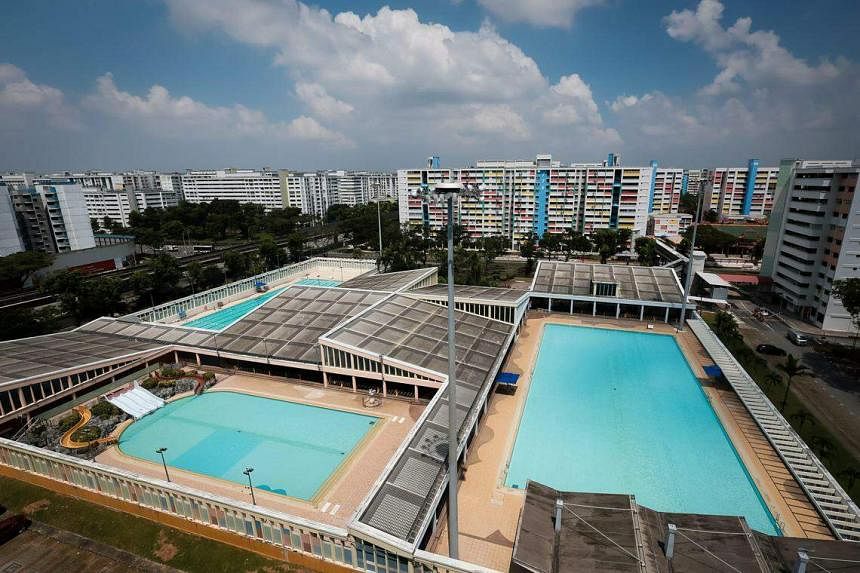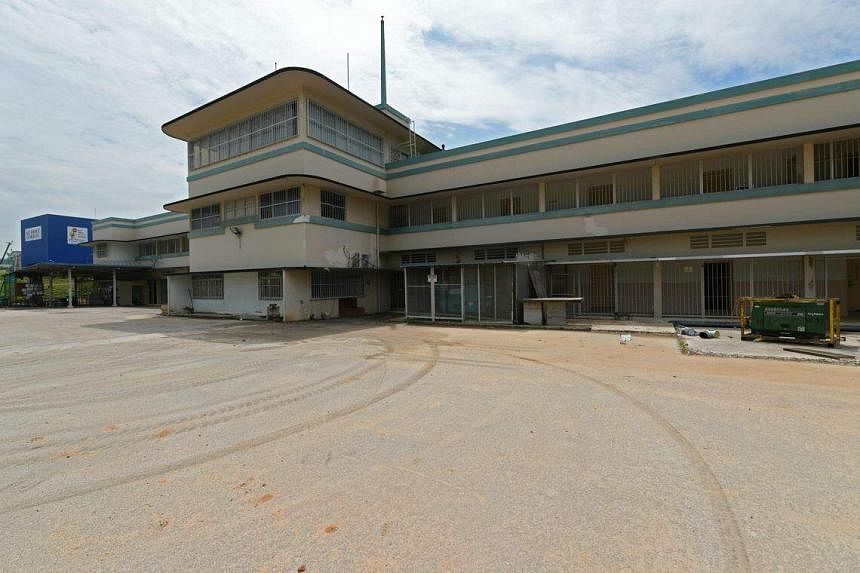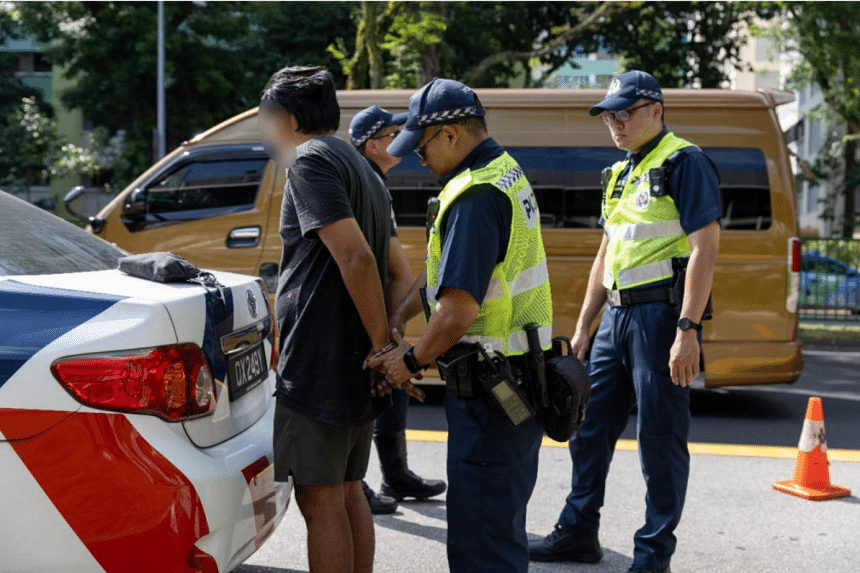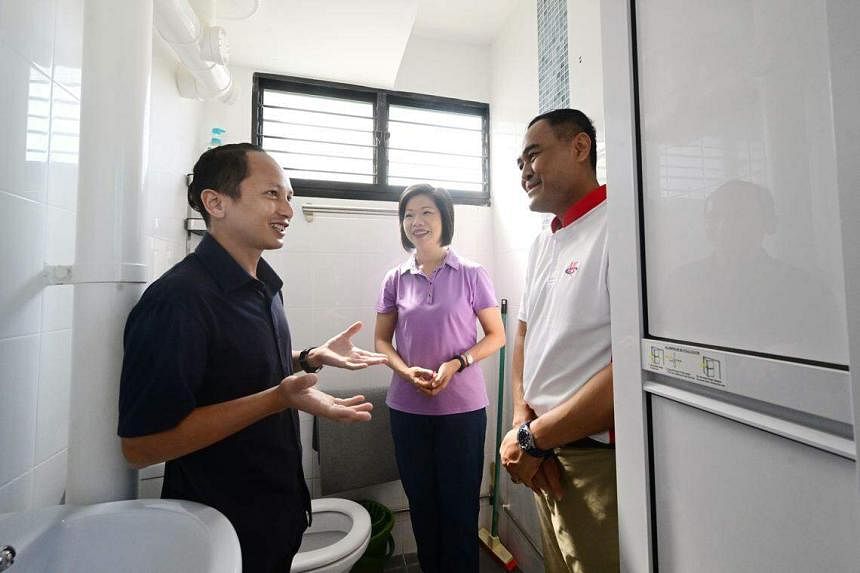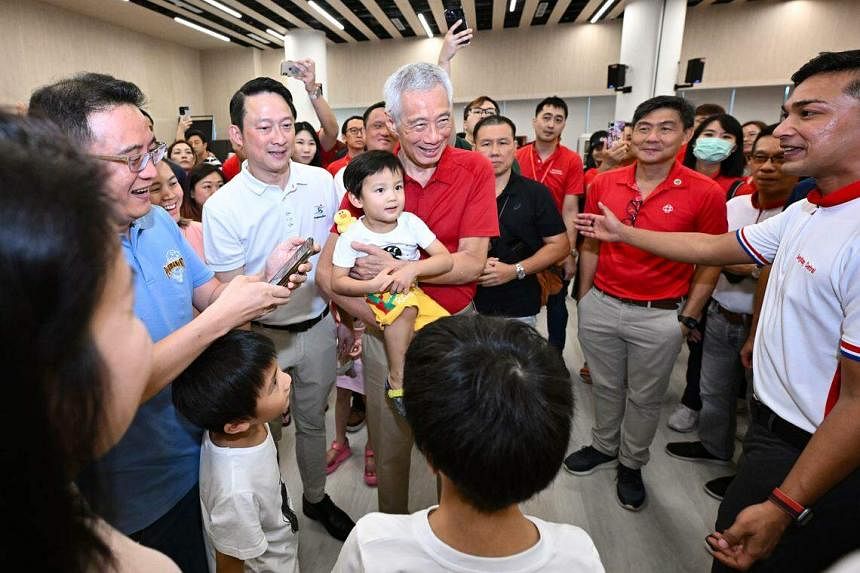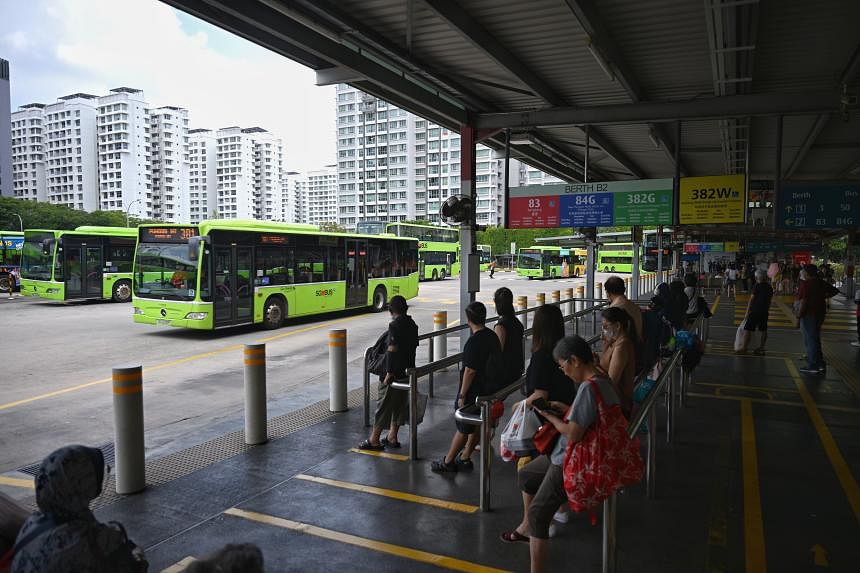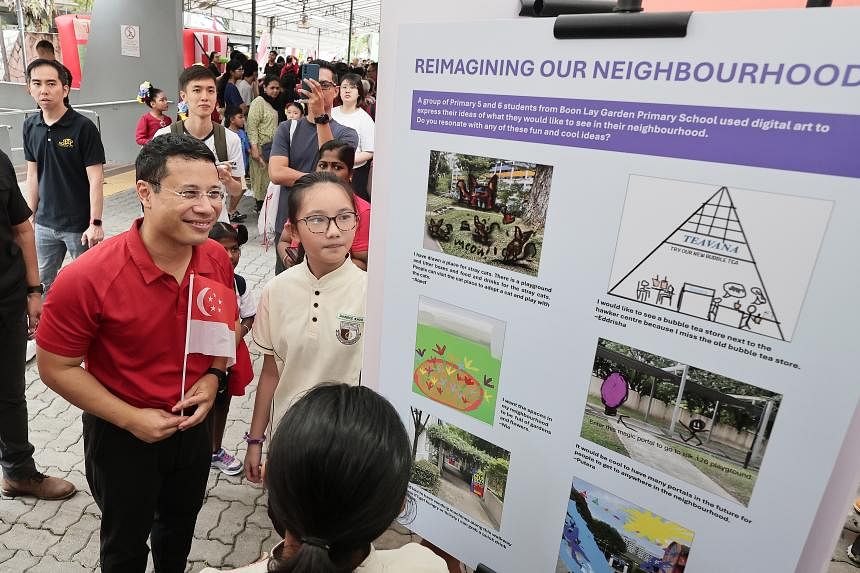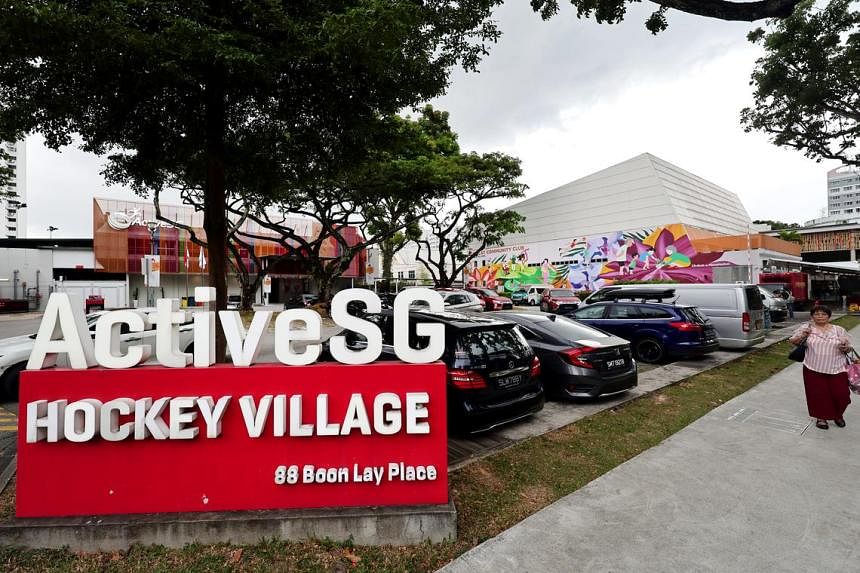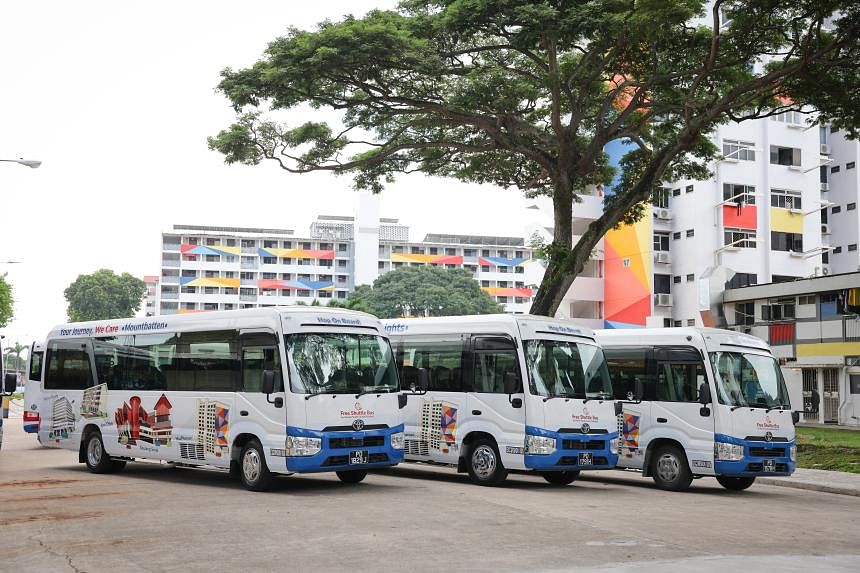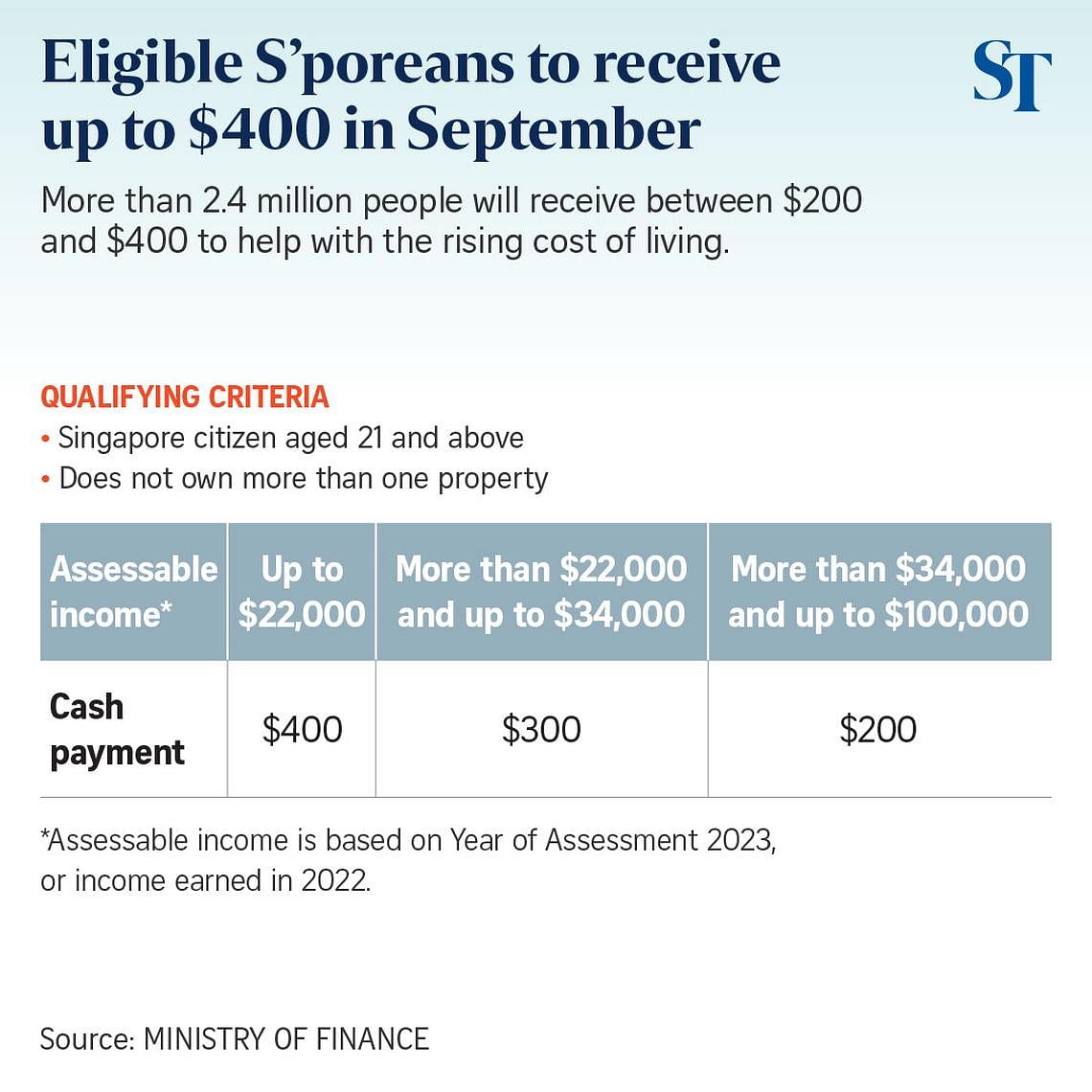- Joined
- Jul 25, 2008
- Messages
- 14,379
- Points
- 113
Vote-buying.
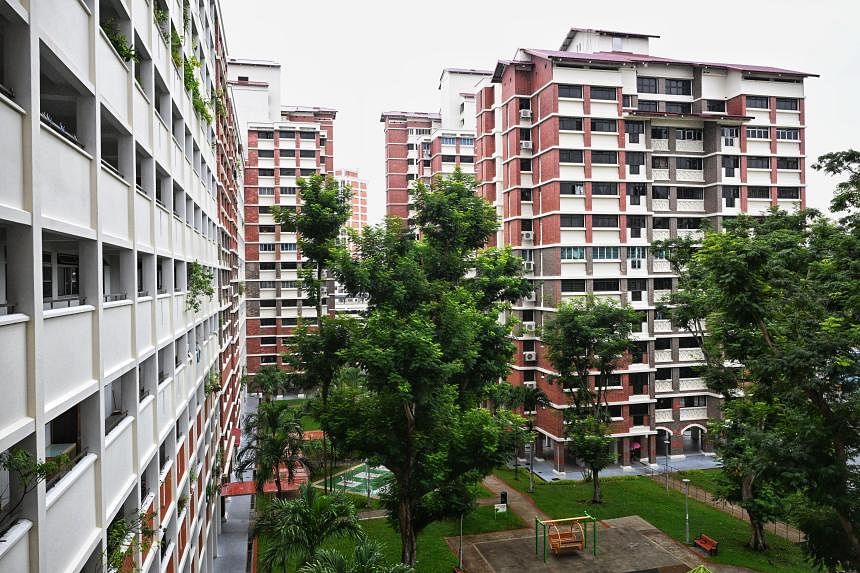
Hougang Central is one of 23 residential precincts included in the next round of the Neighbourhood Renewal Programme. ST PHOTO: CHONG JUN LIANG

Shabana Begum
JUN 01, 2024
SINGAPORE - More than $95 million has been set aside to upgrade and rejuvenate 23 residential precincts islandwide under the next edition of the HDB Neighbourhood Renewal Programme (NRP), which is expected to benefit over 15,600 homes.
Housing Board blocks selected for the facelift include those in Hougang Central, Clementi Avenue and Pasir Ris.
The amenities and upgrades will be based on residents’ feedback on the features they hope to see in their neighbourhood. Those could include Residents’ Corners and sitting areas, fitness corners with jogging tracks and covered linkways.
This 15th round of the NRP was announced by National Development Minister Desmond Lee at a community event in Clementi Town Centre on June 1.
The NRP was introduced in 2007 and as at April, a total of 120 precincts – comprising about 172,000 flats – have been upgraded.
More than $1.5 billion was allocated for the past 14 editions of NRP.
Mr Lee said: “As a society that is rapidly ageing, we are in fact making a bigger push and more concerted effort to address our seniors’ needs in the built environment.”
Future projects under the NRP will include more senior-friendly amenities that enable the elderly to stay active and remain safe in their neighbourhoods. Such features could include therapeutic gardens with wheelchair-friendly planter boxes, fitness trails connecting senior-centric amenities, and signage to make navigation easier, HDB said on June 1.
In addition, over 20 precincts that have already had upgrades in the past but have more elderly residents will be further spruced up with senior-friendly features, said Mr Lee, adding that more than 21,000 homes in Ang Mo Kio, Bukit Merah, Queenstown, and Toa Payoh may benefit from this.
Since town councils continue to face rising costs of materials and manpower, HDB’s budget for this round of the NRP will also be raised from $4,700 per flat to $6,100 per flat, added Mr Lee.
This makes the $95 million the largest funding amount for any one NRP edition. The budget will also be raised to $6,100 for eligible ongoing projects from previous rounds, said HDB.
Senior Minister of State for National Development Tan Kiat How, who announced the NRP to Hougang Central residents on June 1, said: “Construction costs have gone up partly because of Covid-19 matters (and) many other issues including supply chain (issues)... But the good news is with higher budget hopefully we can do more for our residents.”
Mr Tan had joined some Hougang residents and Mr Jackson Lam, the Grassroots Adviser for Hougang Grassroots Organisations, for a brisk walk on the morning of June 1.

Senior Minister of State, Ministry of National Development Tan Kiat How, (third from left), and Jackson Lam, adviser to Hougang GROs (fourth from left) doing warm up exercises with residents before a brisk walk around the estate of block 836 Hougang Central on June 1, 2024. ST PHOTO: CHONG JUN LIANG
Upgrading works are fully funded by the Government and implemented by the respective town councils who will engage their own designers and building contractors.
One result of this renewal programme is The Arena @ Keat Hong, a 639 sq m sports facility in Choa Chu Kang which was opened in 2022. It has a pavilion, playgrounds, fitness corners, a jogging track and game courts.
The NRP’s 15th edition and the previous rounds cover all eligible housing blocks that are at least 29 years old, or were built before or in 1995. From the next edition, the upgrading programme will be extended to blocks built between 1996 and 1999, and the areas that will benefit from renewal are expected to be selected by end-2024.
The NRP is among a few schemes under HDB which focus on renovating flats and sprucing up neighbourhoods.
Others include the Home Improvement Programme and the Enhancement for Active Seniors (Ease) programme, which subsidises home features such as grab bars, slip-resistant bathroom floors and foldable shower seats.
Encouraging residents from the 23 precincts to be involved in improvements to their neighbourhood, Mr Lee said: “As residents, you know your neighbourhood best... Over the next few months, Dr Tan Wu Meng (Jurong GRC MP), as well as the local grassroots and town councils, will be reaching out to seek your views and suggestions, and this will be happening all across the island.”
23 neighbourhoods across Singapore to be upgraded, over $95 million set aside

Hougang Central is one of 23 residential precincts included in the next round of the Neighbourhood Renewal Programme. ST PHOTO: CHONG JUN LIANG

Shabana Begum
JUN 01, 2024
SINGAPORE - More than $95 million has been set aside to upgrade and rejuvenate 23 residential precincts islandwide under the next edition of the HDB Neighbourhood Renewal Programme (NRP), which is expected to benefit over 15,600 homes.
Housing Board blocks selected for the facelift include those in Hougang Central, Clementi Avenue and Pasir Ris.
The amenities and upgrades will be based on residents’ feedback on the features they hope to see in their neighbourhood. Those could include Residents’ Corners and sitting areas, fitness corners with jogging tracks and covered linkways.
This 15th round of the NRP was announced by National Development Minister Desmond Lee at a community event in Clementi Town Centre on June 1.
The NRP was introduced in 2007 and as at April, a total of 120 precincts – comprising about 172,000 flats – have been upgraded.
More than $1.5 billion was allocated for the past 14 editions of NRP.
Mr Lee said: “As a society that is rapidly ageing, we are in fact making a bigger push and more concerted effort to address our seniors’ needs in the built environment.”
Future projects under the NRP will include more senior-friendly amenities that enable the elderly to stay active and remain safe in their neighbourhoods. Such features could include therapeutic gardens with wheelchair-friendly planter boxes, fitness trails connecting senior-centric amenities, and signage to make navigation easier, HDB said on June 1.
In addition, over 20 precincts that have already had upgrades in the past but have more elderly residents will be further spruced up with senior-friendly features, said Mr Lee, adding that more than 21,000 homes in Ang Mo Kio, Bukit Merah, Queenstown, and Toa Payoh may benefit from this.
Since town councils continue to face rising costs of materials and manpower, HDB’s budget for this round of the NRP will also be raised from $4,700 per flat to $6,100 per flat, added Mr Lee.
This makes the $95 million the largest funding amount for any one NRP edition. The budget will also be raised to $6,100 for eligible ongoing projects from previous rounds, said HDB.
Senior Minister of State for National Development Tan Kiat How, who announced the NRP to Hougang Central residents on June 1, said: “Construction costs have gone up partly because of Covid-19 matters (and) many other issues including supply chain (issues)... But the good news is with higher budget hopefully we can do more for our residents.”
Mr Tan had joined some Hougang residents and Mr Jackson Lam, the Grassroots Adviser for Hougang Grassroots Organisations, for a brisk walk on the morning of June 1.

Senior Minister of State, Ministry of National Development Tan Kiat How, (third from left), and Jackson Lam, adviser to Hougang GROs (fourth from left) doing warm up exercises with residents before a brisk walk around the estate of block 836 Hougang Central on June 1, 2024. ST PHOTO: CHONG JUN LIANG
Upgrading works are fully funded by the Government and implemented by the respective town councils who will engage their own designers and building contractors.
One result of this renewal programme is The Arena @ Keat Hong, a 639 sq m sports facility in Choa Chu Kang which was opened in 2022. It has a pavilion, playgrounds, fitness corners, a jogging track and game courts.
The NRP’s 15th edition and the previous rounds cover all eligible housing blocks that are at least 29 years old, or were built before or in 1995. From the next edition, the upgrading programme will be extended to blocks built between 1996 and 1999, and the areas that will benefit from renewal are expected to be selected by end-2024.
The NRP is among a few schemes under HDB which focus on renovating flats and sprucing up neighbourhoods.
Others include the Home Improvement Programme and the Enhancement for Active Seniors (Ease) programme, which subsidises home features such as grab bars, slip-resistant bathroom floors and foldable shower seats.
Encouraging residents from the 23 precincts to be involved in improvements to their neighbourhood, Mr Lee said: “As residents, you know your neighbourhood best... Over the next few months, Dr Tan Wu Meng (Jurong GRC MP), as well as the local grassroots and town councils, will be reaching out to seek your views and suggestions, and this will be happening all across the island.”




